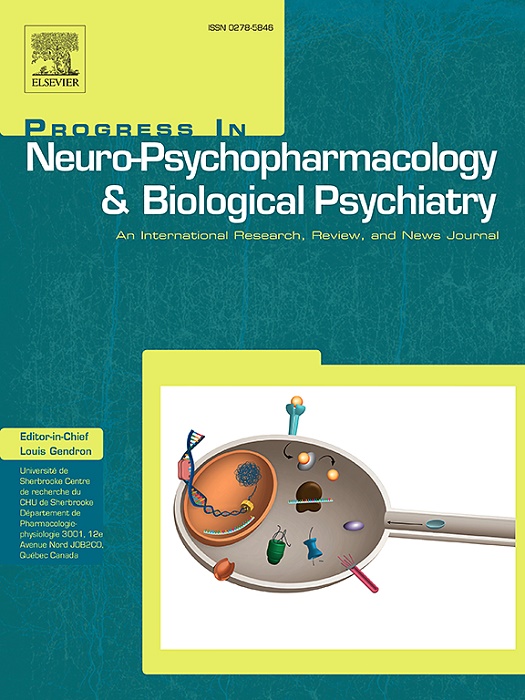神经外科术后患者丙戊酸代谢的遗传和临床因素
IF 3.9
2区 医学
Q1 CLINICAL NEUROLOGY
Progress in Neuro-Psychopharmacology & Biological Psychiatry
Pub Date : 2025-08-12
DOI:10.1016/j.pnpbp.2025.111468
引用次数: 0
摘要
丙戊酸(VPA)通常用于治疗癫痫和双相情感障碍,需要50-100 mg/L的治疗浓度来平衡疗效和安全性。尽管已知影响VPA代谢的临床和遗传因素,但综合预测模型有限。该研究分析了来自275名中国参与者的497份样本的VPA浓度,检查了23个临床变量和24个遗传snp。参与者按SNP谱分组,其中一组显示VPA水平显著升高。影响VPA浓度的关键因素包括遗传变异(如rs12233719、rs12769205、CYP2C19 snp)、给药间隔、溶剂体积、BMI和丙帕他莫共给药。网络分析强调了影响VPA浓度的遗传和临床变量的独立性。随机森林算法的回归模型表现出优异的性能,其中剂量间隔、BMI和遗传因素是最重要的预测因子。使用并行随机森林算法的分类模型在区分低于治疗阈值的VPA浓度方面的中位精度为73 %。功能分析将相关snp与cypp介导的ω -氧化联系起来。本研究强调了遗传和临床因素在VPA代谢中的相互作用,提出了个性化的给药策略,以改善预后并最大限度地减少副作用。本文章由计算机程序翻译,如有差异,请以英文原文为准。
Genetic and clinical factors associated with the metabolism of valproic acid in post-neurosurgery patients
Valproic acid (VPA) is commonly used to treat epilepsy and bipolar disorder, requiring therapeutic concentrations of 50–100 mg/L to balance efficacy and safety. Despite known clinical and genetic factors influencing VPA metabolism, integrated predictive models are limited. This study analyzed VPA concentrations in 497 samples from 275 Chinese participants, examining 23 clinical variables and 24 genetic SNPs. Participants were grouped by SNP profiles, with one cluster showing significantly elevated VPA levels. Key factors influencing VPA concentrations included genetic variants (e.g., rs12233719, rs12769205, CYP2C19 SNPs), dosage interval, solvent volume, BMI, and propacetamol co-administration. Network analysis highlighted the independence of genetic and clinical variables in influencing VPA concentrations. A regression model with the random forest algorithm demonstrated superior performance, with dosage interval, BMI, and genetic factors among the top predictors. A classification model using a parallel random forest algorithm achieved a median accuracy of 73 % in distinguishing VPA concentrations below the therapeutic threshold. Functional analyses linked associated SNPs to CYP-mediated omega-oxidation. This study highlights the interplay of genetic and clinical factors in VPA metabolism, advancing personalized dosing strategies to improve outcomes and minimize side effects.
求助全文
通过发布文献求助,成功后即可免费获取论文全文。
去求助
来源期刊
CiteScore
12.00
自引率
1.80%
发文量
153
审稿时长
56 days
期刊介绍:
Progress in Neuro-Psychopharmacology & Biological Psychiatry is an international and multidisciplinary journal which aims to ensure the rapid publication of authoritative reviews and research papers dealing with experimental and clinical aspects of neuro-psychopharmacology and biological psychiatry. Issues of the journal are regularly devoted wholly in or in part to a topical subject.
Progress in Neuro-Psychopharmacology & Biological Psychiatry does not publish work on the actions of biological extracts unless the pharmacological active molecular substrate and/or specific receptor binding properties of the extract compounds are elucidated.

 求助内容:
求助内容: 应助结果提醒方式:
应助结果提醒方式:


